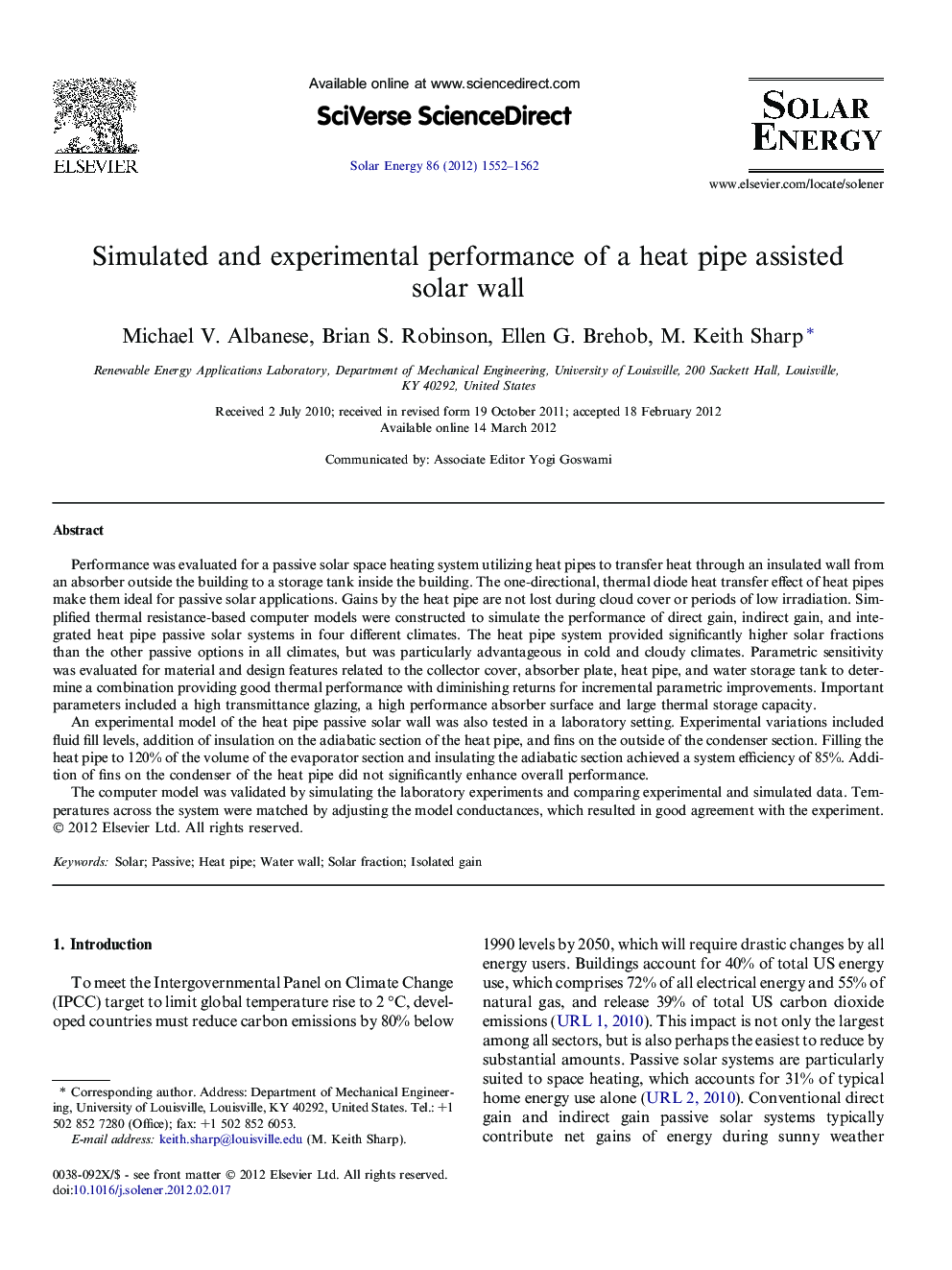| Article ID | Journal | Published Year | Pages | File Type |
|---|---|---|---|---|
| 1551099 | Solar Energy | 2012 | 11 Pages |
Performance was evaluated for a passive solar space heating system utilizing heat pipes to transfer heat through an insulated wall from an absorber outside the building to a storage tank inside the building. The one-directional, thermal diode heat transfer effect of heat pipes make them ideal for passive solar applications. Gains by the heat pipe are not lost during cloud cover or periods of low irradiation. Simplified thermal resistance-based computer models were constructed to simulate the performance of direct gain, indirect gain, and integrated heat pipe passive solar systems in four different climates. The heat pipe system provided significantly higher solar fractions than the other passive options in all climates, but was particularly advantageous in cold and cloudy climates. Parametric sensitivity was evaluated for material and design features related to the collector cover, absorber plate, heat pipe, and water storage tank to determine a combination providing good thermal performance with diminishing returns for incremental parametric improvements. Important parameters included a high transmittance glazing, a high performance absorber surface and large thermal storage capacity.An experimental model of the heat pipe passive solar wall was also tested in a laboratory setting. Experimental variations included fluid fill levels, addition of insulation on the adiabatic section of the heat pipe, and fins on the outside of the condenser section. Filling the heat pipe to 120% of the volume of the evaporator section and insulating the adiabatic section achieved a system efficiency of 85%. Addition of fins on the condenser of the heat pipe did not significantly enhance overall performance.The computer model was validated by simulating the laboratory experiments and comparing experimental and simulated data. Temperatures across the system were matched by adjusting the model conductances, which resulted in good agreement with the experiment.
► Heat pipes in passive solar systems can greatly reduce nighttime and cloudy day losses. ► Simulated performance was substantially better than conventional systems in a range of climates. ► Important parameters were cover thickness and extinction coefficient, absorber properties and thermal storage capacity. ► A bench-scale model produced efficiency as high as 85%.
